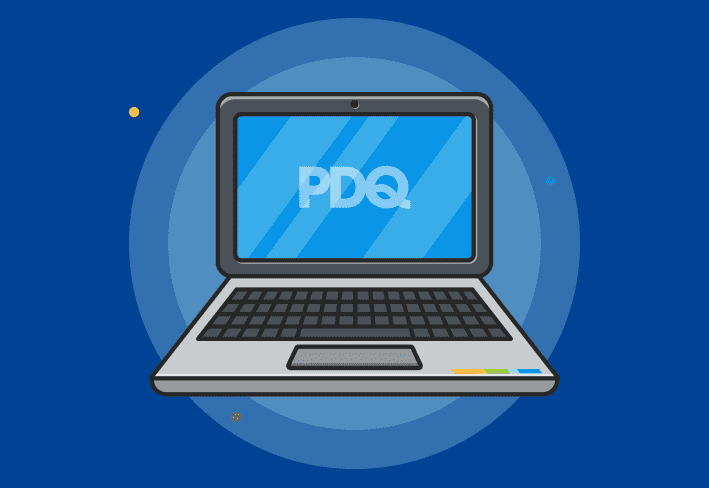Computer hardware includes the components inside a computer and any externally connected peripherals. While computers appear in everything from cars to vacuums to mobile phones, most people think of a laptop or desktop computer system.
Despite their varying forms and sizes, almost every computer has at least three hardware parts in common: CPU, RAM, and persistent storage.
Central processing unit (CPU): The CPU is the brain of the computer. This processor fetches, decodes, and executes instructions from programs, application software, and the operating system, effectively translating commands into actions. Because the CPU processes many tasks at once, it requires a fan to cool it down.
Random access memory (RAM): This hardware provides temporary storage for information from applications and systems currently in use. RAM makes the data easily accessible, allowing the processor to interact with it quickly. The more RAM that is available, the faster the computer runs. Sometimes IT professionals speed up a computer by adding more RAM.
Persistent storage: Also known as nonvolatile storage, persistent storage maintains data even when powered down. Two of the most common types of persistent storage are solid state drives (SSDs) and hard disk drives (HDDs), which can be used as either internal or external hard drives. Other examples of persistent storage are tape drives, flash drives, CDs, and DVDs.
What's the difference between internal and external computer hardware?
Internal hardware is the equipment built and integrated into the computer or laptop case. A computer requires these components to function. External hardware, sometimes called peripheral devices, is everything that can be connected to a computer after it’s built. External computer hardware is not necessary for the computer to function, but it often enhances the experience and ease of use. For instance, a laptop trackpad is an internal hardware component, while a wireless mouse is optional external hardware component.
In order to connect an external hardware device, your computer needs a port or a form of wireless technology, such as Bluetooth. While each computer has a variety of connection types, external hardware most often connects via a USB, eSATA, HDMI, or auxiliary port, requiring a cable compatible with both the external hardware and the port.
Common computer hardware
Some types of computer hardware, both internal and external, are relatively standard even if they’re not essential. These are the parts that many users recognize and expect.
Internal hardware
While CPU, RAM, and persistent storage are standard across most computers, your device is likely to have many other parts. Here are some of the other most common pieces of internal hardware:
Motherboard
Power supply
Heat sinks
Fans
Sound card
Speakers
Network interface controller (NIC)
Video card (also called a graphics card)
External hardware
External hardware is much more diverse. A peripheral may be an input device, which gives instructions to the computer. Otherwise, it can be an output device, which receives instructions from the computer. Here are some of the most common examples of external hardware:
Monitor
Keyboard
Mouse
Docking station
Webcam
Printer
Headphones
Speakers
Network router
External hard drive
External optical drive
Image scanner
Projector
USB flash drive
Point of sale device (if you operate a retail establishment)
How does hardware differ from software?
While hardware is physical equipment, software is a collection of instructions that tell the hardware what to do. All software requires hardware to operate, and a seamless user experience requires both hardware and software.
The operating system is the most essential piece of software, allowing users to operate the computer without speaking the computer’s language. It basically manages the hardware and software to make the computer usable.
Software can be saved on a computer, or it can be stored in the cloud and offered as a service. Cloud applications are hosted on some type of server somewhere, they just don’t need to be installed on your local computer. Many technology companies operate on a software as a service (SaaS) model in which subscribers access the applications via the internet.
What hardware does a business need to operate?
Virtually all businesses need at least basic computer hardware to operate, but what specific equipment they require depends on how they plan to use it.
Necessary internal hardware
Business computer hardware is a considerable expense. If you’re buying computers for your employees, then you might select models based partially on their internal hardware. Pay attention to these internal components:
Central Processing Unit (CPU): Higher processing power means your computer can complete more tasks simultaneously. Suppose your company is processing massive amounts of data, doing high-resolution video editing, or developing complex multiplayer video games. In that case, spending more for a higher-performance CPU may be worth it. If your company only uses computers for basic business functions, like email and occasional video conferencing, then standard CPUs should meet your needs.
Storage: Consider what and how much information you need to store. If you work with large files, like images, videos, and other design files, you’ll need larger amounts of data. Many organizations utilize file servers to host company documents and other files on their network. These servers are usually backed up to a network storage device. Cloud backup is another great option for backing up files, but plans can get pricey.
RAM: If your company uses resource-intensive software programs, adding RAM to your computers might be a good idea. Additional RAM is reasonably affordable and can be an easy way to speed up the performance, especially for team members editing photos, watching videos (sysadmin influencer content definitely counts as work related), or managing hundreds of open tabs on Google Chrome.
Necessary external hardware
When considering external hardware options for your employees, look at what you have. If you provide a laptop rather than a desktop computer, some employees may prefer an external keyboard, mouse, and/or monitor. Meeting your employees’ hardware needs and preferences can enhance their productivity and happiness. Here are some common external hardware options you may need:
Monitors (you may need multiple monitors per person)
Keyboards
Mice
Docking stations
Bluetooth headsets
Printers
Webcams
Your Wi-Fi also requires networking hardware to run smoothly:
Modems
Routers
Switches
Hubs
Bridges
Depending on the system’s complexity, you may need a computer hardware engineer with a strong understanding of computer science to ensure your devices work together. Effective computer engineering is paramount for system performance.
Deciding on the right hardware for your business
Assessing your needs and goals is the first step in determining what hardware you need. What do you use computers for? What software solutions do you rely on? Once you understand your computer usage, you can work backward to choose the right hardware for your business.
Before purchasing hardware, consider how the following considerations align with your needs:
Performance
Storage
Mobility
Features
Maintenance
Compatibility
Budget
For many businesses, easily upgradable systems are invaluable. That way, you can scale your hardware along with your business without reinvesting in an entirely new system. Since technology is constantly changing, upgradable hardware also makes it easier for your IT team to keep up with the changes.
If you’re not sure where to start, talk to employees. We’re not saying to ask them about their CPU requirements or how much RAM they need. Prepare for blank stares if you take that approach. However, team members can tell you what software they use, how often they perform complex functions (like editing videos or analyzing large amounts of data), and what external hardware they’d like.
Choosing the right hardware for your business doesn’t have to be overwhelming. Understand the core components, match them to your team’s real-world needs, and plan for future growth.
Still have questions or want gear recommendations from folks in the trenches? Join the PDQ Community or swing by the PDQ Discord to chat with fellow IT pros.



